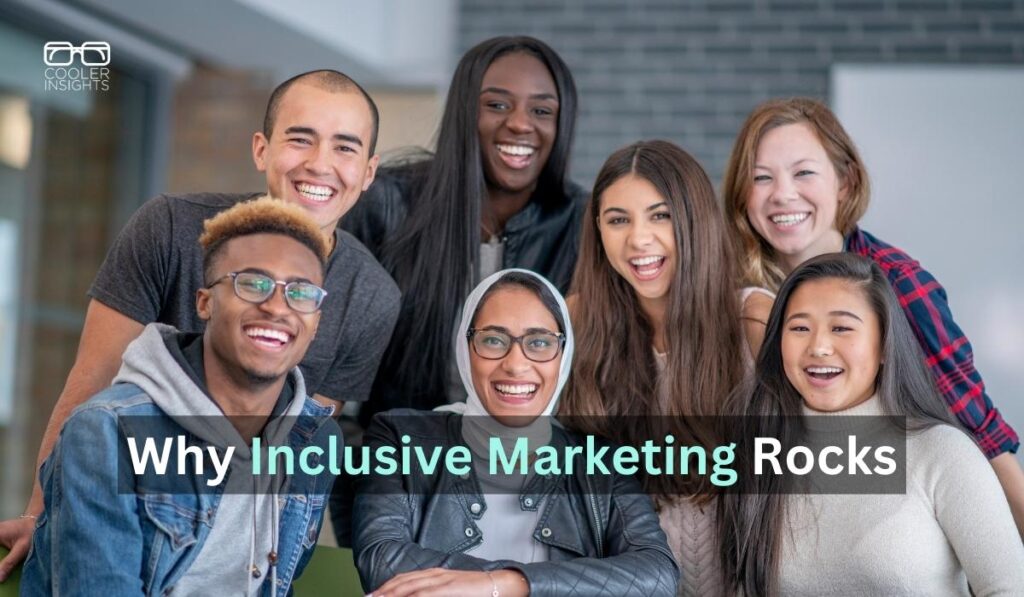
Whether you’re marketing your business on your own or you have a team to help you, implementing effective strategies can make it easier to identify and cater to your target audience.
However, it’s essential to make sure you aren’t excluding anyone from that audience. Here’s why.
Inclusive marketing will help your small business to grow, making your campaigns accessible to people and communities that often get left out of modern marketing trends.
Thankfully, inclusivity in marketing is easier than you might think and incredibly important for the success of your business.
Let’s cover some of the notable benefits of inclusive marketing, as well as some tips you can use to implement it into your strategy.
The Benefits of Inclusive Marketing
Running a successful business is about consistent growth. Even if you have an idea of who your target audience is and what they’re looking for, the last thing you want is to alienate certain people within that audience who might have disabilities or who process information differently.
With inclusive marketing, you can avoid alienation and stop “stereotyping” your customers.
When you open up your marketing efforts to include everyone, you’ll allow customers to form a better relationship with your brand. Some of the greatest benefits you can experience when you choose to expand your efforts include:
- An appeal to multiple groups
- Better brand loyalty
- Greater brand perception
You’ll also show a greater awareness of diversity, and as you represent people who are often underrepresented, you’ll start to generate new customers thanks to word-of-mouth advertising. Instead of alienating people within your audience, you’ll expand your reach as people start to realize how much effort you’re putting in to include everyone.
No matter how long you’ve been in business or how much marketing experience you have, everyone can agree that kind of advertising is worth its weight in gold, and an important key if you want to build customer loyalty and improve your brand’s longevity.
Understanding the Types of Inclusive Marketing
There is no “one-size-fits-all” when it comes to marketing — that’s the entire point of inclusivity. If you truly want to cater to everyone in your audience, you have to consider all forms of diversity, including:
- Age
- Ethnicity
- Appearance
- Socioeconomic status
- Physical and mental abilities
We touched on audience alienation earlier, so how can you make sure you’re embracing all types of diversity without leaving anyone out?
Consider using multiple formats to market your business. Study your data and customize your marketing outreach, such as by sending personalized emails or creating target ads to reflect the specific needs, wants, and concerns of your diverse audience.
When most people think of inclusivity, their minds immediately go to things like ethnic backgrounds and physical impairments. However, it’s just as important to cater to people who might think differently or process information in different ways, including neurodiverse individuals.
Neurodivergent-friendly marketing tactics, including using the right colors and fonts in your content, providing transcripts and closed captions to your videos, and avoiding automatic media players can all be great ways to make 15-20% of the population more comfortable with your marketing strategies.
Which Practices Can You Start Right Away?
Completely shifting your marketing techniques to be more inclusive can take time. However, there are some practices that can be put into place right away.
Consider taking notes from businesses that are already practicing inclusive marketing. A project like Coca-Cola’s 1971 “Buy the World a Coke” campaign is a perfect example of inclusivity, as is Dove’s “real beauty” campaign that showcases women with all different body types and skin tones. These campaigns focused on the equality of inclusivity, making everyone feel just as important as the person next to them.
If you’re not sure how to get started with inclusive marketing, try some of the following tips:
- Reflect real people in real-world situations in your campaigns
- Connect with your audience on social media
- Include videos in your marketing on your website to increase accessibility
- Talk to people in your target audience to develop a better understanding of their experiences
- Review the language and tone of your campaigns before publishing them
When you run a small business, it’s important to connect with as many members of your target audience as possible. Don’t alienate or leave out anyone just because they might experience things differently.
Put inclusive marketing at the forefront of your future strategies. Not only will you grow your audience, but you’ll boost your brand’s reputation.

BIO: Ainsley Lawrence is a freelance writer from the Pacific Northwest in the United States. She enjoys writing about better living through education and technology. She is frequently lost in a mystery podcast.
